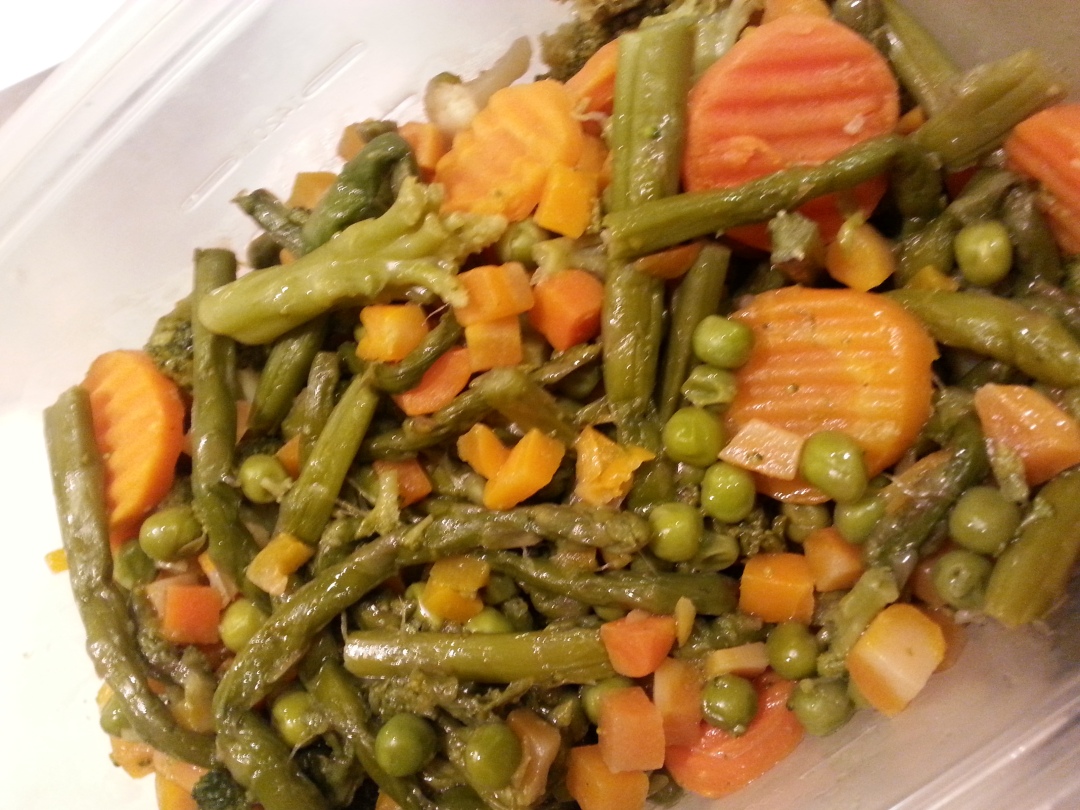I think is a pretty safe bet that most of us struggle to get our recommended daily servings of fruits and vegetables. Fruits are easier for most people to eat on a daily basis, veggies not so much. The recommended daily servings of vegetables is two to three cups a day for most adults. Do you get that many cups a day? Even though I am in the health and wellness field, I sometimes struggle to do this. Many struggle with this; in a 2017 survey, only 1 in 10 adults ate the recommended daily amount of fruit and vegetables.

Growing up we mostly had canned vegetables which are often mushy and tasteless. I think the mushiness of these vegetables is my biggest struggle. For me, boiling or steaming vegetables brings back the memories of canned vegetables.
A few years back I discovered roasting vegetables; this can be done to pretty much any vegetable – carrots, sweet potatoes, green beans, beets, squash, asparagus, and the list can go on and on. By roasting vegetables, it has made eating my veggies a whole lot easier. Reminder that veggies are powerhouses of micronutrients that provide vitamins, minerals, and antioxidants that fuel our overall health and build our immune system. So, let’s look at a basic template for roasting veggies and some tips for success.
Basic Template
- 1 to 2 Tablespoons healthy fat (ghee, butter, olive oil, coconut oil, lard, tallow, bacon fat, avocado oil)
- 6 to 8 cups of chopped vegetables (I recommend a mixture of three or four different ones)
- A large baking sheet lined with parchment paper
- Salt and pepper
- Seasonings of your choice
- Oven or toaster oven
– Healthy Fats: Quality matters; if using olive or avocado choose cold pressed. Animal fats such as ghee, lard, tallow, bacon fat should be from pasture-raised animals to get the most health benefits. Organic is best.
Vegetables: You can choose root vegetables, winter squash, cruciferous, soft vegetables, thin vegetables, onions, tomatoes. There will be different roasting times for each of these categories. You can check out the chart below for that.
A large baking sheet lined with parchment paper works great and makes for easy clean up. Non-bleached parchment paper will be the healthiest option. It is best to avoid aluminum bakeware as aluminum has been linked to Alzheimer’s Disease; stoneware and stainless steel will work great. Glass can be used as long as you are baking at 350 degrees and no higher.
Salt and pepper for general seasoning and other herbs such as rosemary, thyme, sage, cinnamon, cardamon are all great options. Sometimes I will use a little honey if I want a sweeter taste or nutritional yeast for a cheesy flavor.
Roasting vegetables can be done in a 350- to 425-degree oven. It depends on the type of fat you are using. Olive oil would be at the lower end and the animal fats at the higher end. Ghee can be used as high as 450 but your veggies might get pretty crispy on the outside and not cooked through.
| Group | List | Time |
| Root Vegetables | Beets, potatoes, carrots, yams, turnips, sweet potato | 30 to 60 minutes, depending on how small you cut them |
| Winter Squash | Butternut, acorn, delicata, pumpkin, honeynut | 20 to 60 minutes, depending on how small you cut them |
| Cruciferous | Broccoli, cauliflower, Brussels sprouts, radish, kohlrabi, rutabaga | 15 to 35 minutes |
| Soft Vegetables | Zucchini, summer squash, bell peppers | 10 to 25 minutes |
| Thin Vegetables | Asparagus, green beans | 10 to 25 minutes |
| Onions | 30 to 50 minutes | |
| Tomatoes | 12 to 25 minutes |
How long veggies will take will depend on the oven temperature and the cut size of the vegetables, you can experiment with different size cuts to see what you like best. You will want to stir them halfway through the cooking time to assure they are evenly cooked.
There you have a simple roasting template for preparing your veggies. Do you struggle with eating your vegetables? Have you tried roasting them? What is your favorite vegetable and how do you prepare it?
Be blessed and eat your veggies!
Heather

